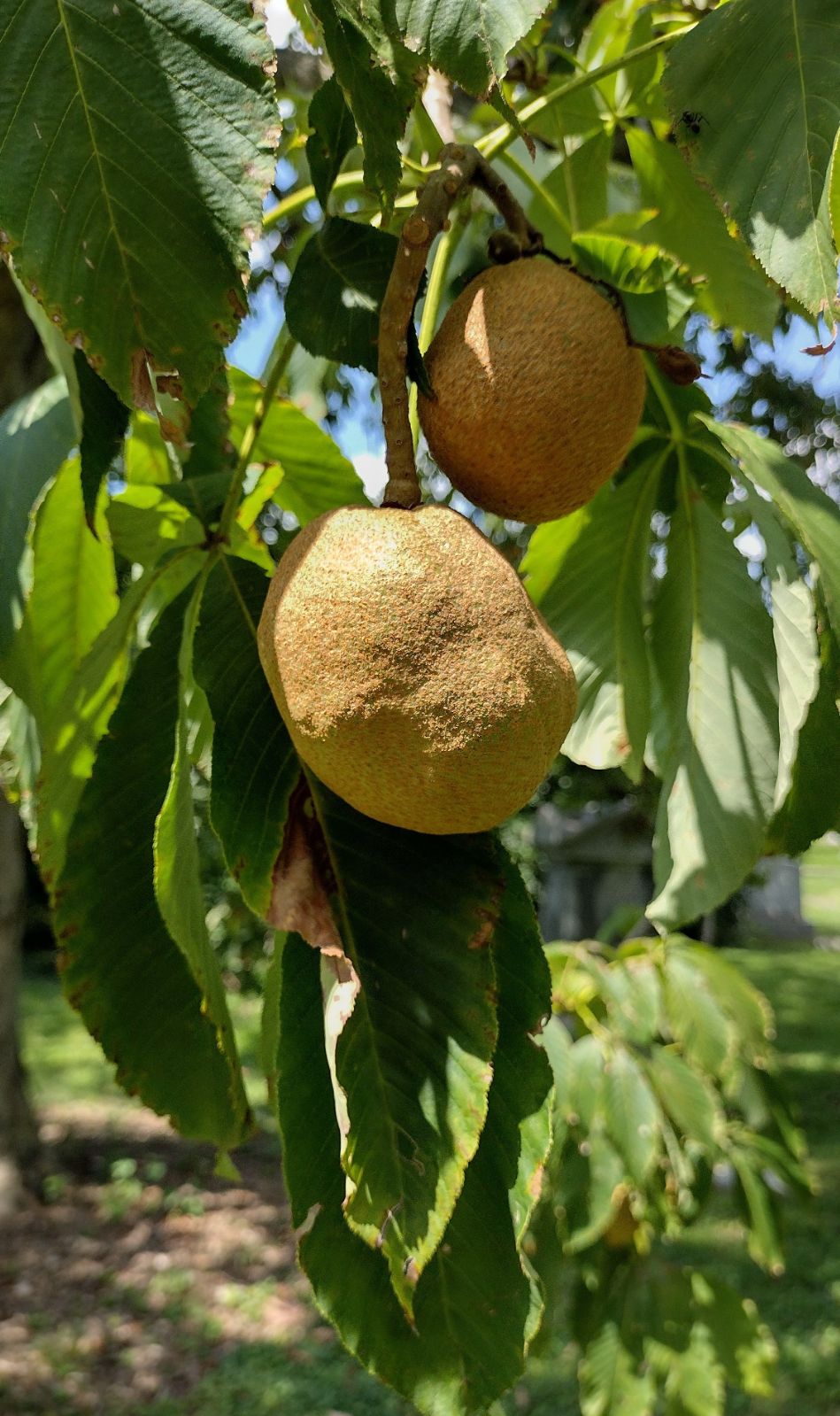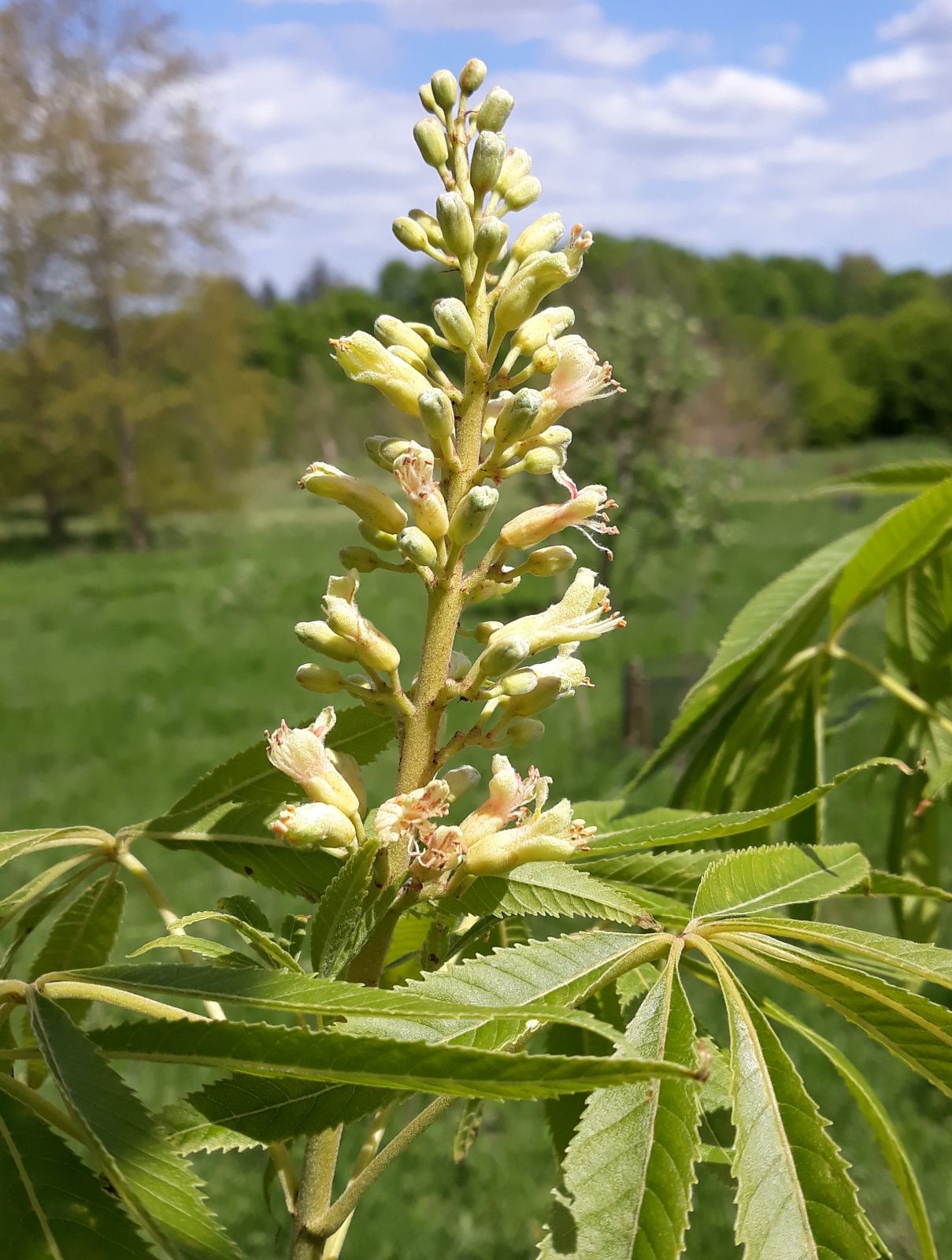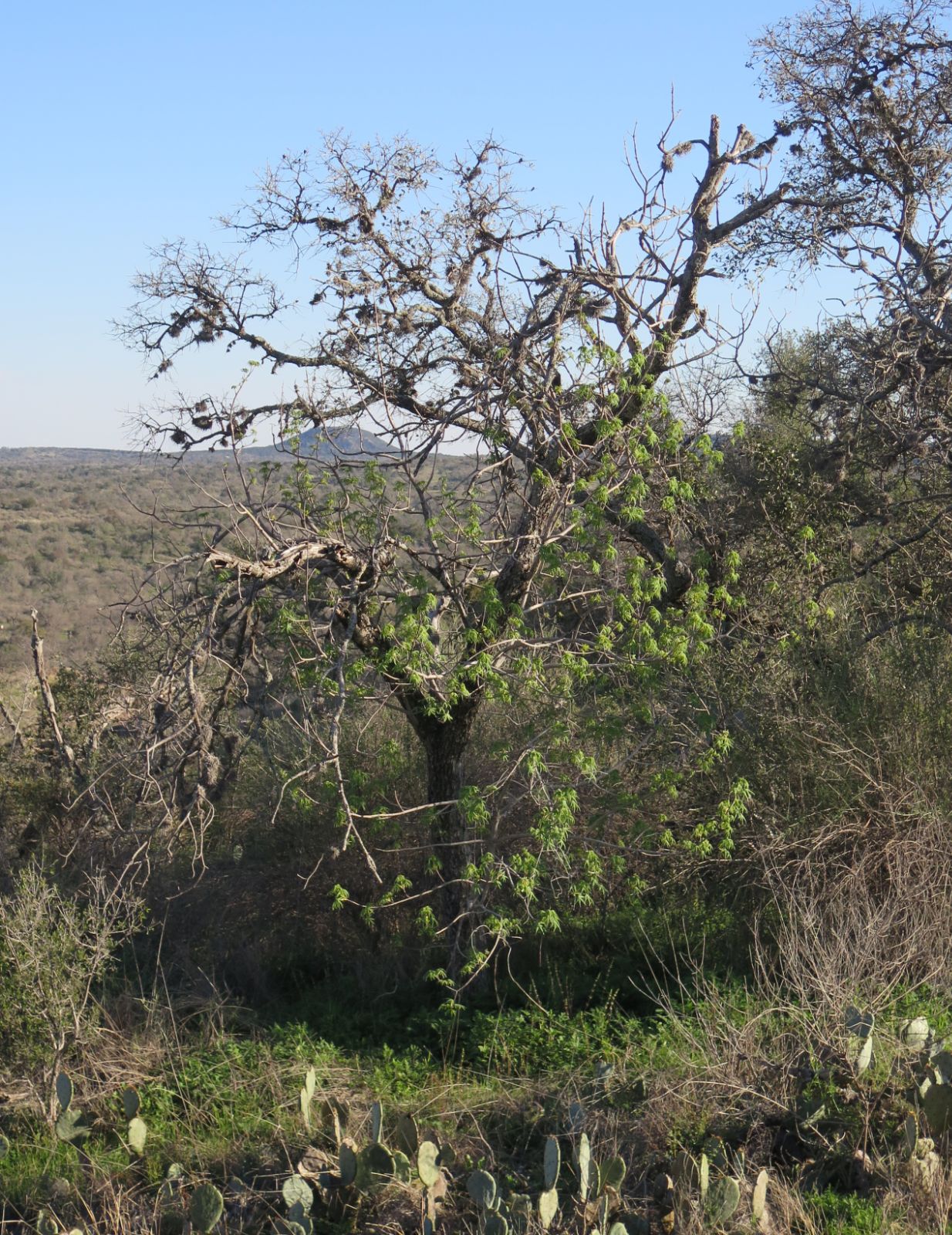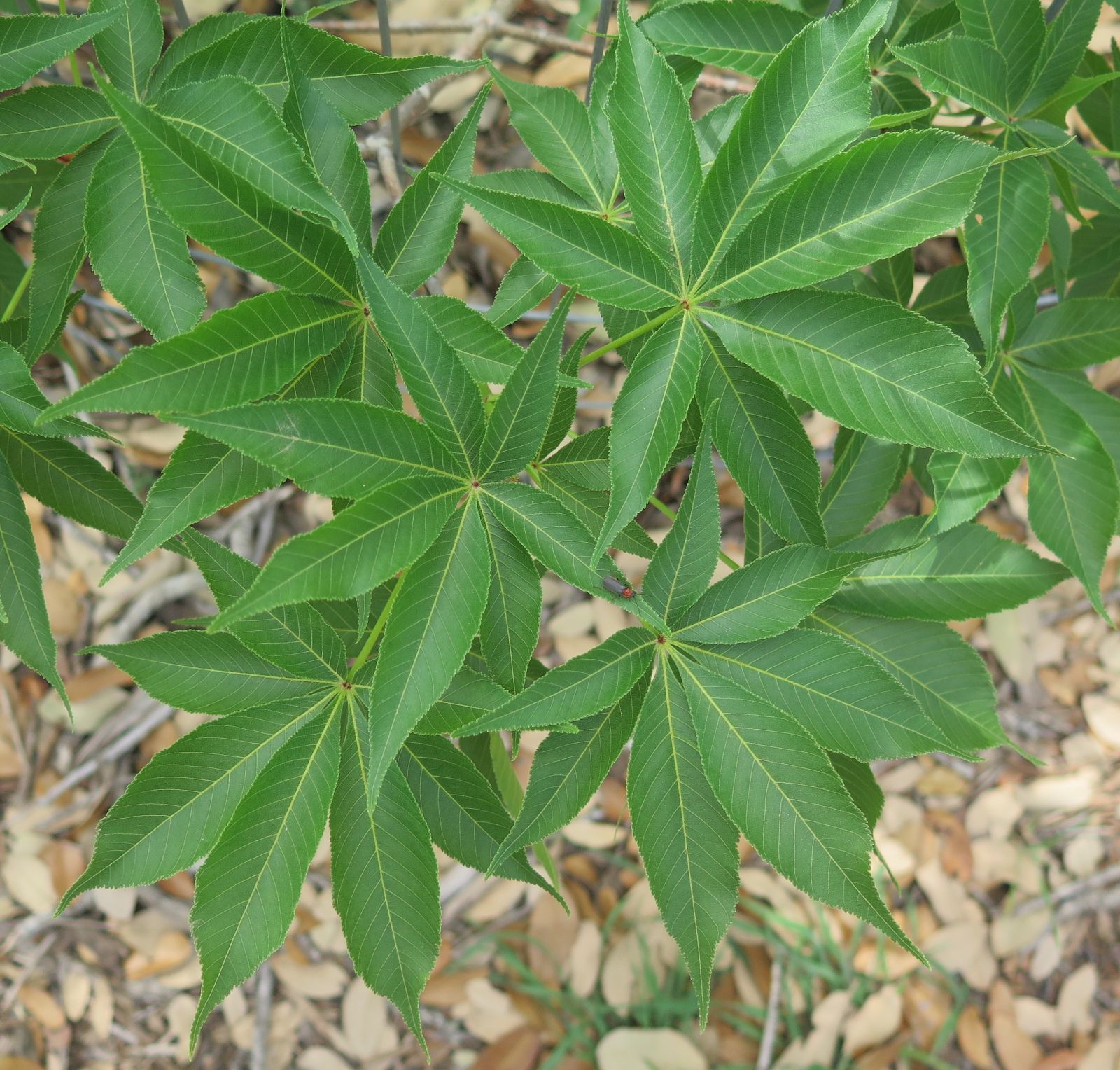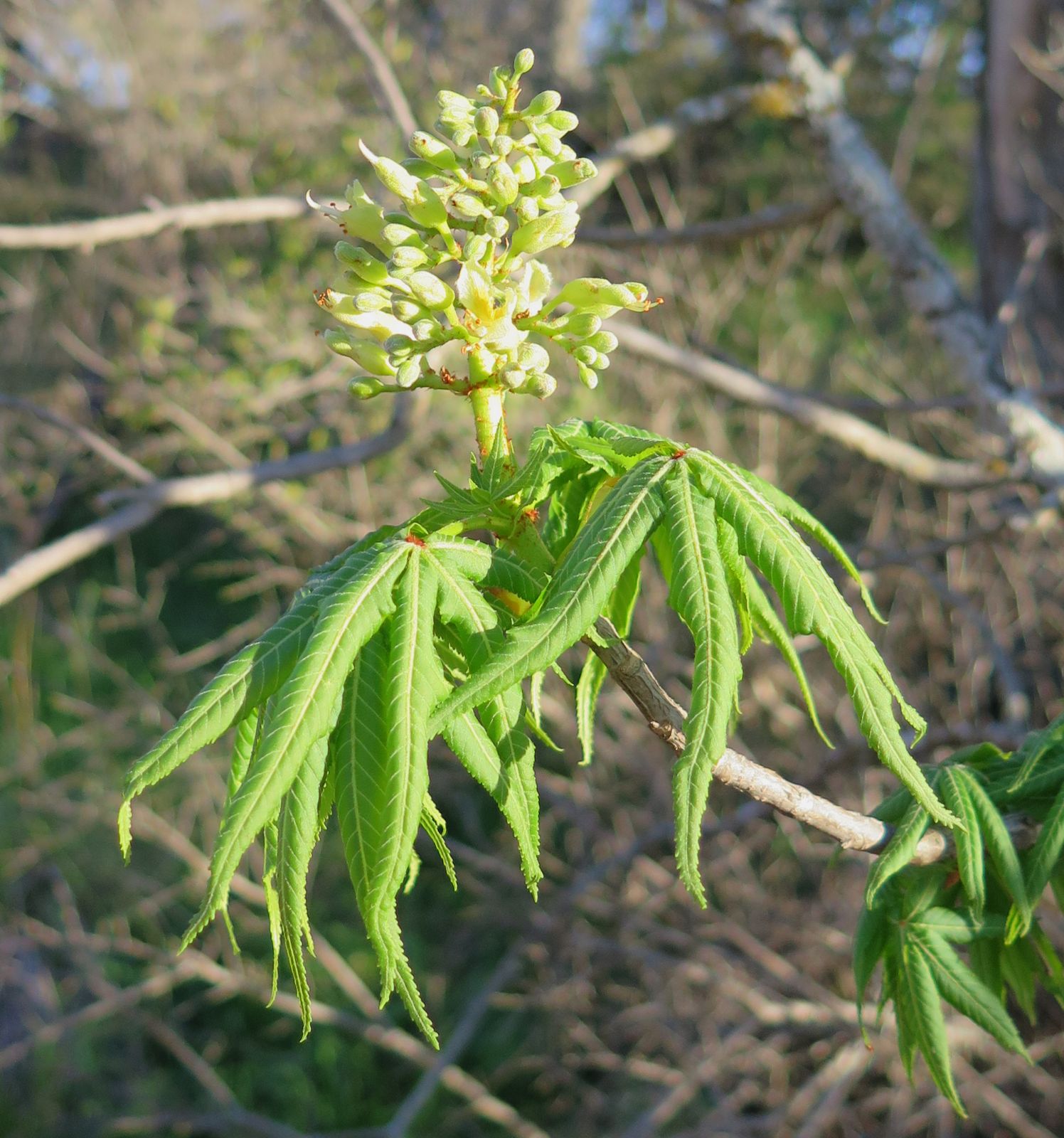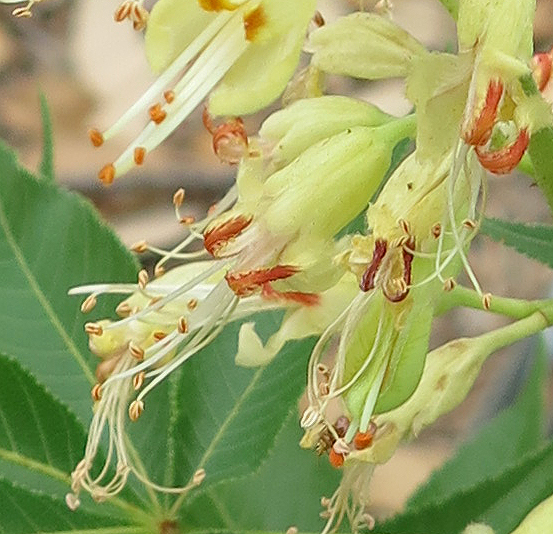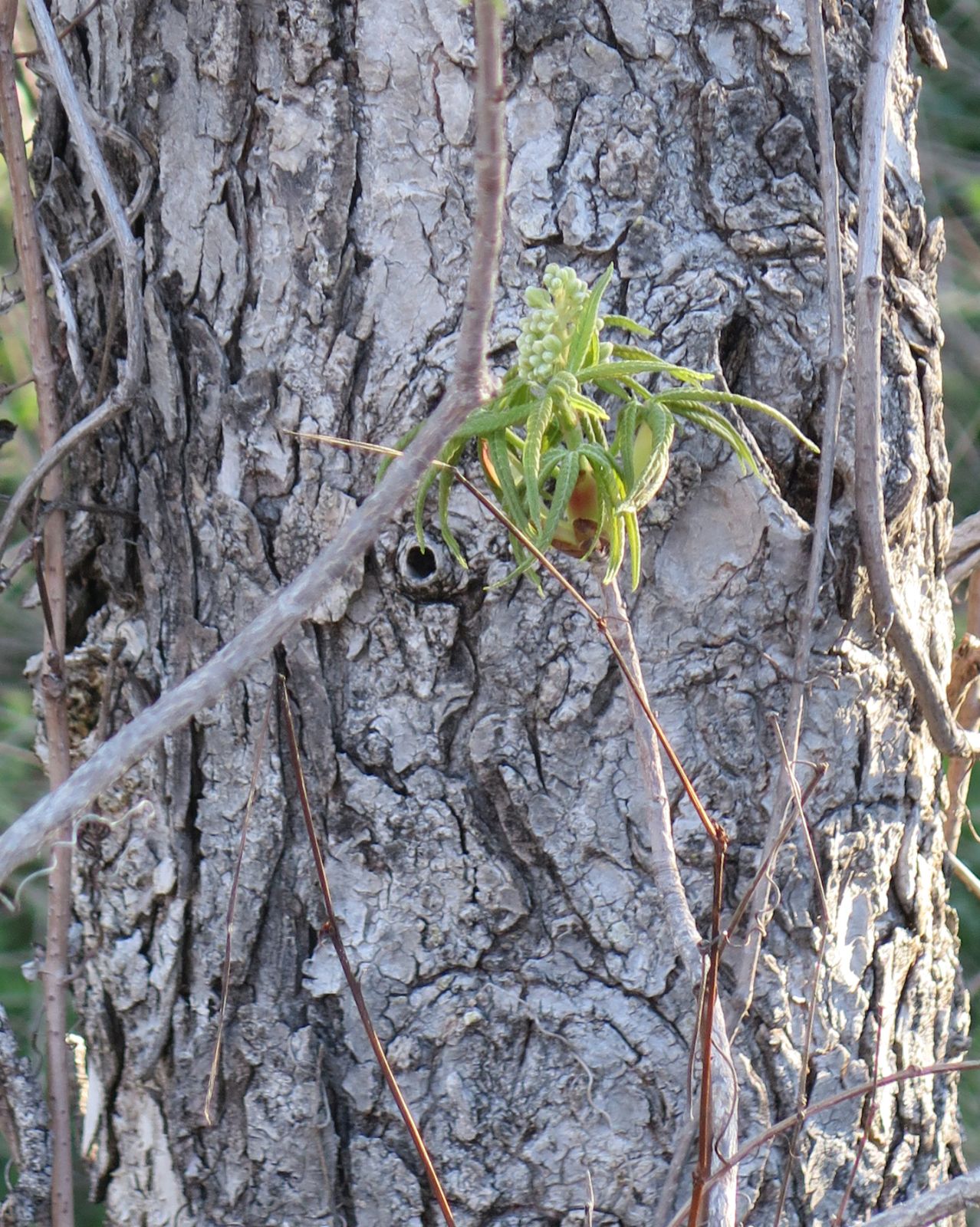Aesculus glabra
Credits
Article from Bean's Trees and Shrubs Hardy in the British Isles
Recommended citation
'Aesculus glabra' from the website Trees and Shrubs Online (treesandshrubsonline.
Genus
Common Names
- Ohio Buckeye
Other taxa in genus
- Aesculus × bushii
- Aesculus californica
- Aesculus × carnea
- Aesculus chinensis
- Aesculus + dallimorei
- Aesculus flava
- Aesculus glabrescens
- Aesculus glaucescens
- Aesculus hippocastanum
- Aesculus indica
- Aesculus × marylandica
- Aesculus × mutabilis
- Aesculus × neglecta
- Aesculus octandra
- Aesculus parviflora
- Aesculus pavia
- Aesculus splendens
- Aesculus sylvatica
- Aesculus turbinata
A tree usually under 30 ft high, but sometimes up to 70 ft, with a trunk over 6 ft in girth; bark of the trunk rough, and much fissured. Leaves usually composed of five leaflets, which are 3 to 6 in. long, about one-third as wide; obovate or oval, with a long, tapering point, sharply toothed; downy when young, but becoming glabrous with age, except along the midrib and chief veins. Flowers about 1 in. long, greenish yellow, in erect panicles 4 to 7 in. long, 2 to 3 in. wide; petals four; stamens 1⁄3 in. longer than the petals. Fruit 1 to 2 in. long, broadly obovoid, distinguished from other American buckeyes by prickles resembling those of common horse-chestnut, but much less prominent.
Native of the S.E. and Central United States. This tree is of handsome shape and foliage, but is the least attractive of the genus in its flowers. Often confused with A. flava, it is readily distinguished by its rougher bark, the less downy leaves, the longer outstanding stamens, and the prickly surfaced fruit. It flowers at the end of May and in early June. It grows well at Kew, where the largest specimen is now 56 × 63⁄4 ft (1967).
From the Supplement (Vol. V)
specimens: Kew, 60 × 71⁄2 ft and, var. leucodermis, pl. 1912, 52 × 4 ft (1980); Clare College, Cambridge, 40 × 43⁄4 ft (1981); Corsham Court, Wilts., 52 × 41⁄4 ft (1981); Edinburgh Botanic Garden, 40 × 41⁄2 ft (1981).
f. pallida (Willd.) Schelle
Synonyms
A. pallida Willd
var. arguta (Buckley) Rob.
Synonyms
Editorial Note
This taxon was described by Bean at species rank as Aesculus arguta, but it is now generally accepted as a variety of A. glabra.
A small tree or more commonly a low shrub, described by Sargent as having numerous small stems often made prostrate in autumn by the weight of the abundant fruits; shoots slender, downy. Leaves of seven or nine leaflets, which are elliptical to narrowly obovate, 3 to 6 in. long and often doubly toothed, usually more or less downy beneath at first. Flowers numerous in pyramidal panicles up to 6 or 8 in. long and half as wide at the base; petals pale yellow, nearly equal, oblong-obovate, each narrowed to a slender claw, downy outside; stamens usually seven, their stalks hairy; calyx bell-shaped, downy, pale yellow-green; ovary hairy. Fruit subglobose, one- to three-seeded; seeds chestnut-brown, 1 in. wide.
Native of E. Texas and an attractive hardy shrub, closely akin to A. glabra, but distinct in its dwarf habit and narrower longer-pointed leaflets. Discovered before 1860; introduced 1909. There is a specimen of 32 × 11⁄2 ft in the Edinburgh Botanic Garden (1968).
From the Supplement (Vol. V)
A. glabra var. arguta (Buckley) Robins.
The example at Edinburgh now measures 33 × 13⁄4 ft (1981).
var. leucodermis Sarg
Native of southern Missouri and Arkansas; best distinguished by its smooth, near-white bark, which only becomes scaly on old trees. Leaves glabrous.var. monticola Sarg
Differs in having six or seven leaflets and a more rounded fruit; found wild in Oklahoma.var. sargentii Rehd. var.
Synonyms
arguta Robins, in part
var. buckleyi Sarg


